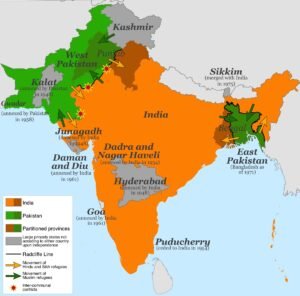Editor-in-Chief: SHAPOUR-T
As the global community grapples with the open wounds of the Ukraine war, the Gaza crisis, and economic turmoil, another dangerous conflict has flared up in South Asia—one that could escalate into one of the most perilous confrontations of the modern era: a nuclear standoff between India and Pakistan.
On Thursday, Islamabad announced it had “credible” intelligence indicating that India was planning to launch a military attack against Pakistan in the coming days. This warning came after a deadly assault in the Kashmir region, which pushed the relationship between the two countries to the highest level of tension since 2019—a year when the nuclear powers were on the brink of all-out war.
The tensions once again stem from the same long-standing flashpoint: Kashmir, a region with a bloody history and a dispute that has persisted since the independence of both countries. A deadly attack on tourists in the Pahalgam area, which claimed the lives of 26 civilians, has prompted India to respond with fury, while Pakistan has, as always, denied any involvement. However, this time, the responses have escalated far beyond verbal threats.
The Indian government has ordered the evacuation of its citizens from Pakistan, while Islamabad reports sightings of Indian drones and fighter jets in its airspace. The rhetoric on both sides has shifted from defensive postures to explicit threats. India has spoken of a “limited military response,” while Pakistan has warned of a “crushing reply” to any attack.
In this climate, the main concern revolves around the nuclear capabilities of both countries. India adheres to a “no first use” policy regarding nuclear weapons, while Pakistan follows a “full-spectrum deterrence” policy, meaning that Islamabad does not rule out the first use of nuclear weapons if it perceives a vital threat.
However, this double-edged sword of deterrence itself poses a major threat. In a crisis where both sides are under pressure from public opinion, electoral considerations, and security concerns, the risk of miscalculation increases. This is particularly true in a densely populated region where any conflict would have catastrophic consequences for the people and infrastructure.

While independent assessments estimate that the nuclear arsenals of both countries are comparable (around 170 to 200 nuclear warheads), it is crucial to understand that the balance of terror only works when rationality prevails in decision-making. In times of political turmoil, that rationality is not guaranteed.
Moreover, a world already embroiled in multiple crises is in no position to cope with a new war in South Asia. The United States, China, the G7 countries, and even the Gulf Arab states have all called for calm. The United Nations has urged both sides to exercise restraint. But will these pressures translate into action?
India and Pakistan have long demonstrated a form of “diplomacy on the edge of the cliff” when managing regional crises, backing away from the brink each time. The question now is whether this time the same script will play out, or will a new crisis cross the red lines?
The world cannot afford to normalize the danger. In a region where two nuclear powers are on the verge of direct confrontation, there is no room for error. It is time for global actors to move beyond clichéd statements and actively intervene to de-escalate the tension.










































